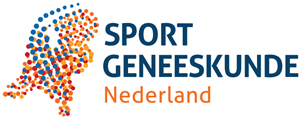Congress date:
April 21, 2016 – 13.00 hr until
April 23, 2016 – 14.00 hr.
Ultrasound course (preceeded to the congress): April 21, 2016 – 08.30-13.30 hr (including lunch)
Academic Medical Center
Meibergdreef 9
1105 AZ Amsterdam
The Netherlands
It is with great pride that we introduce our annual ESSR approved course on Imaging in Sports Injuries entitled “Radiologist meets sports medicine” In a two and a half day course we aim to provide guidance in this relatively new ‘arena’ of radiology. The traditional role of the radiologist is changing from a relatively passive to a more active role in patient care. This is even truer in the field of sports radiology. We cannot stay passive behind our workstations any more but have to be closely involved in all aspects concerning the injured athlete. Since patients are becoming more demanding and since shared decision making already is mainstay in elite sports management, the radiologist who is dealing with an injured athlete needs to be part of the medical team and needs to feel responsible for this position. Musculoskeletal radiologists should be key players and should be in the frontline. Close interaction between the different disciplines that are involved in dealing with injured sports people is mandatory and can only be beneficial for the patient.
Why might you consider participating? Please let us explain:
– The athlete is in the center! Talking to the injured athlete is crucial for understanding the patient needs and for the services that you need to provide.
– The pathology differs tremendously from what we encounter in general musculoskeletal radiology. Knowledge of e.g. sports biomechanics is crucial. It helps in understanding the pathogenesis of acute and chronic overuse injuries.
– The specific imaging features. Especially among athletes, one will see all sorts of pathology in one patient at any given time. Often however lots of these findings are relatively unimportant at the time of imaging. Frequently abnormal findings will not correlate with the clinical diagnosis.
– The team. You do not only need to be aware of the specific needs of the patient but also have to understand the role of other disciplines within the field. Understanding each other’s role is very important. Others in the team will have different demands, needs and possibly views regarding injuries in athletes. Only by talking to each other, listening and sharing each other’s knowledge and by frequently consulting and teach one another, you will get the multidisciplinary approach, which is incredibly important. Knowledge beyond the general scope of the radiologist, like in e.g. biomechanics and treatment of injuries is vital. Therefore during this course we will not only look at pathology from a strict imaging point of view but we will also talk to athletes and sports doctors. We have scheduled ‘clinical’ sessions with sports physicians and their athletes, turf battles between sports physicians and radiologists, live surgery on an injured athlete and some topics that transcend the original scope of the radiologist i.e. how to communicate with each other.
Bekijk het programma op de website: www.sportscongressamsterdam.nl.
